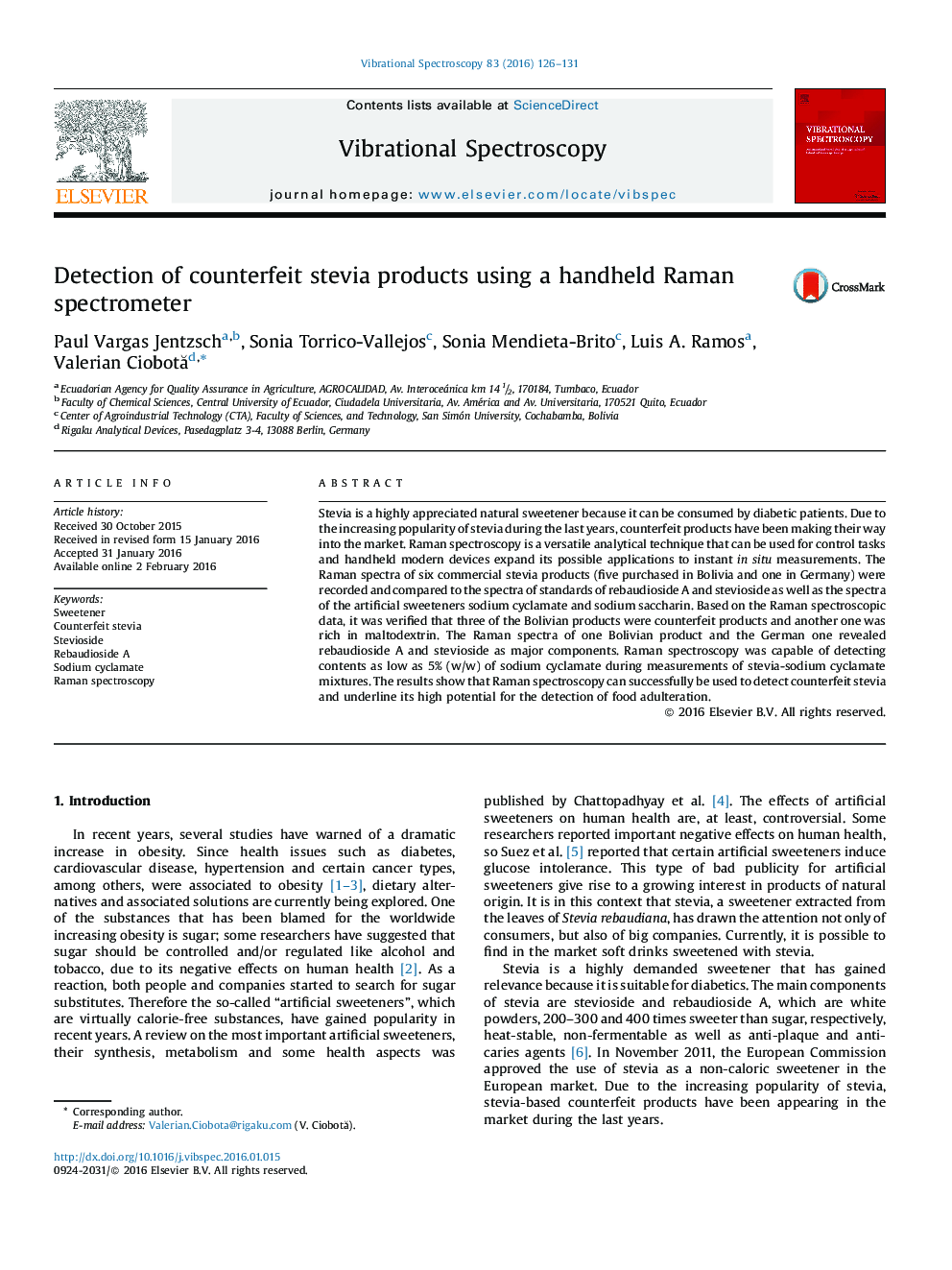| Article ID | Journal | Published Year | Pages | File Type |
|---|---|---|---|---|
| 1251712 | Vibrational Spectroscopy | 2016 | 6 Pages |
Stevia is a highly appreciated natural sweetener because it can be consumed by diabetic patients. Due to the increasing popularity of stevia during the last years, counterfeit products have been making their way into the market. Raman spectroscopy is a versatile analytical technique that can be used for control tasks and handheld modern devices expand its possible applications to instant in situ measurements. The Raman spectra of six commercial stevia products (five purchased in Bolivia and one in Germany) were recorded and compared to the spectra of standards of rebaudioside A and stevioside as well as the spectra of the artificial sweeteners sodium cyclamate and sodium saccharin. Based on the Raman spectroscopic data, it was verified that three of the Bolivian products were counterfeit products and another one was rich in maltodextrin. The Raman spectra of one Bolivian product and the German one revealed rebaudioside A and stevioside as major components. Raman spectroscopy was capable of detecting contents as low as 5% (w/w) of sodium cyclamate during measurements of stevia-sodium cyclamate mixtures. The results show that Raman spectroscopy can successfully be used to detect counterfeit stevia and underline its high potential for the detection of food adulteration.
